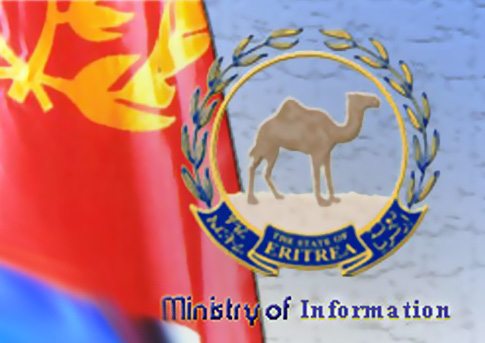A leaked Cable of US Embassy Tel Aviv, Israel depicts a bleak picture of the situation of Ethiopian Israelis (also known as Falash Mura).
The March 2004 Cable presents socio-economic data, citing relevant bodies. Among those:
* Only 32 percent of Ethiopian students were eligible to sit for college entrance exams, compared with 50 percent of students in the general population
* as many as 26 percent of Ethiopian-Israeli youth either drop out of school or do not regularly attend classes
* Sixty-five percent of Ethiopian-Israelis between the age of 25 and 54 are unemployed.
* Few Ethiopian-Israelis — 4 percent of men and 15 percent of women — are to be found in the academic, liberal, and technical professions.
* Most of them — 75 percent of working men and 62 percent of working women — are employed as unskilled agricultural and manufacturing workers. Sixty-five percent of Ethiopian-Israeli households depend on welfare
* Of the 94,000 Jewish licensed teachers in Israel, 30 are of Ethiopian origin, according to the Ministry of Education. Statistics provided by the Israeli Bar Association indicate that there are only five practicing Ethiopian- Israeli lawyers. The largest employer of Ethiopian- Israeli women is the public sector. The majority of Ethiopian-Israelis employed by government agencies provide services to other Ethiopian immigrants. The number of Ethiopian-Israelis who own their own businesses is negligible. The few that do exist are limited to small family shops that sell Ethiopian style clothing, music, and spices.
The Cable further notes that:
* Jews of Ethiopian origin represent the lowest rung of Israel’s Jewish socioeconomic ladder. While many of the difficulties that they face may be explained, at least in part, by the challenges of immigration, cultural differences, and the disparity in educational levels, this alone does not fully explain the extent of their marginalization, particularly in the case of the 30,000 Ethiopian-Israelis born in Israel.
* Ethiopian Israelis almost unanimously believe that racism and stereotypes play a significant role in their troubled assimilation into Israeli society. Even some veteran Israeli contacts admit that Israelis are developing a negative image of Ethiopians.
* Many Israelis question the Judaism of Ethiopian Israelis…..Indeed, the Habad, one of Israel’s most activist orthodox religious sects, does not fully recognize Ethiopian Israelis as Jews.
* Ethiopian Israelis point to the widespread use in the media of the word "Cushi," a Hebrew word meaning "Ethiopian negro," that they find offensive, to describe them as anecdotal evidence of racial prejudice.
Critics of the government’s miniscule effort to change the situation caution, according to the Cable:
[the Government of Israel] must do more or Ethiopian immigrants could be locked into a cycle of despair and poverty that will lead to the creation of a permanent black underclass.
Given the depressing data presented in the Cable, arguably the Ethiopian Israeli has already become an underclass like African-Americans. Whether their current status can be called a ‘permanent’ one is not clear.
Read the Cable below.
*********************
Reference ID – 04TELAVIV1375
Created – 2004-03-05 08:06
Released – 2011-08-24 01:00
Classification – UNCLASSIFIED
Origin – Embassy Tel Aviv
This record is a partial extract of the original cable. The full text of the original cable is not available.
UNCLAS SECTION 01 OF 04 TEL AVIV 001375
SIPDIS
STATE FOR NEA/PPD M.QUINN, D.BENZE
STATE INFO NEA/IPA, ECA, ITP
JERUSALEM PASS ICD C.DANIELS
E.O. 12958: N/A
TAGS: KPAO SCUL KIRF ET IS ISRAELI SOCIETY
SUBJECT: ETHIOPIAN JEWRY IN ISRAEL
¶1. Summary: Ethiopian Jews in Israel number approximately 90,000. Fifty percent of them are under the age of 25. Most can trace their families’ arrival in Israel to rescue missions such as Operation Moses (1984) and Operation Solomon (1991). The vast majority live in impoverished communities where even menial work is scarce, and the lack of educational opportunities relegates most to low wage jobs. They face huge obstacles in the areas of access to employment, education, and housing. These difficulties are, at least in part, the result of challenges that they confront in moving from an essentially agrarian society in Ethiopia to the modern, technologically advanced Israeli economy. Sixty-five percent of Israelis of Ethiopian origin are not working. More than 80 percent are functionally illiterate in their native Amharic. Last year, only about 1,250 Ethiopian students entered university at the completion of high school and military service, according to Israel’s Central Bureau of Statistics (CBS). While there is a small middle class, it is negligible when compared with the overall Israeli population. In addition, Ethiopian Israelis are held back by the widespread perception that they are not `real’ Jews. Stereotyping and discrimination also trouble them and hinder their integration into Israeli society. The GOI has taken some steps to address these issues. It offers scholarships to Ethiopian students, promotes vocational training, provides favorable mortgages to Ethiopian homebuyers, and supports NGOs that foster ethnic and religious tolerance. However, critics argue that the GOI must do more or Ethiopian immigrants could be locked into a cycle of despair and poverty that will lead to the creation of a permanent black underclass. End Summary
————————————
Educating Ethiopian-Israeli Children
————————————
¶2. Ethiopian immigrants to Israel struggle to bridge a huge knowledge gap that directly impacts their integration into Israeli society. They have one of the highest dropout rates and lowest achievement records of any community in Israel. Only 32 percent of Ethiopian students were eligible to sit for college entrance exams, compared with 50 percent of students in the general population, according to the JDC Brookdale Institute, a leading center for applied research on human services. A recent survey by the Institute found that more than 50 percent of Ethiopian-Israeli parents are not equipped to assist their children with schoolwork, and 65 percent of teachers have low expectations of these students, creating an unfortunate cycle of low expectations and poor performance. Ethiopian-Israelis are concentrated in a small number of communities, often learning at substandard schools. Barbara Swirski, director of the Adva Center, a non- partisan Israeli policy analysis center, explained that less than one-third of Ethiopian students in elementary and middle school receive grades at or above the national average, and thirty-five percent of Ethiopian- Israeli students in grades 1-9 cannot read or write at grade level. UNESCO estimates that 90 percent of adult Ethiopian immigrants had less than five years of schooling in Ethiopia, before they immigrated to Israel.
————————–
Bridging the Education Gap
————————–
¶3. The GOI provides students from the Ethiopian immigrant community special classes and extra hours of instruction, counseling at critical transitional junctures such as kindergarten-to-first grade and junior high-to-high school. It also pays their university tuition costs. Statistics from the CBS indicate that 1500 Ethiopian Israelis are currently pursuing university degrees, compared with less than 100 five years ago. The GOI has allocated considerable resources to provide preschool education for disadvantaged children, many of whom are of Ethiopian origin.
————————–
Rescuing Disaffected Youth
————————–
¶4. Negist Menguesha, director of the Ethiopian National Project (ENP), an umbrella NGO for the development of Ethiopian-Israelis, says that as many as 26 percent of Ethiopian-Israeli youth either drop out of school or do not regularly attend classes. An increasing number of these youth have become involved in illegal activities. According to Simcha Getahune, the director of the Ethiopian Affairs Unit of ELEM, an NGO that works with youth at risk, in 1996, forty-seven Ethiopian youth were arrested for violent crimes. By 2002, the number had risen to 220. In 1996, there was one arrest for a drug-related offense, but in 2002 the number had jumped to 58. Similar increases were reported with regard to property crimes during this period.
¶5. ELEM estimates that more than 3500 Ethiopian youth are at-risk. To reclaim these youth, it established partnerships with the GOI and other NGOs to return the youth to the formal education structure, and, when that is not an option, to prevent them from coming to harm on the streets. Partnerships offer special academic courses to reintroduce youth to the classroom, leadership development training, and courses designed to strengthen their connection with Israel and Judaism. Other activities focus on building cooperation between parents, teachers and communities to ensure that children stay in school. Shula Mola, former director of the Israeli Association for Ethiopian Jews, insists, "Second chance programs prove that when resources are directed towards bridging educational and cultural gaps, Ethiopian youngsters can make it. However, Israel’s budgetary constraints mean that the full integration of disaffected Ethiopian youth will be delayed."
———————————————
Ethiopian Israelis: Struggling for Acceptance
———————————————
¶6. Jews of Ethiopian origin represent the lowest rung of Israel’s Jewish socioeconomic ladder. While many of the difficulties that they face may be explained, at least in part, by the challenges of immigration, cultural differences, and the disparity in educational levels, this alone does not fully explain the extent of their marginalization, particularly in the case of the 30,000 Ethiopian-Israelis born in Israel.
————————-
Who’s a Jew and Who’s Not
————————-
¶7. Many Israelis question the Judaism of Ethiopian Israelis (also known as Falash Mura), the majority of whom converted to Christianity in Ethiopia, many under coercion. There is a widespread perception that the approximately 22,000 Falash Mura who claim Jewish ancestry awaiting immigration to Israel do not have Jewish roots and simply want to escape economic hardship in Ethiopia. Indeed, the Habad, one of Israel’s most activist orthodox religious sects, does not fully recognize Ethiopian Israelis as Jews. To allay doubts about the Falash Mura’s claims of Judaism, the GOI investigates the Jewish ancestry of intended immigrants and encourages them to undergo orthodox conversion, says Batia Eyob, director of the Israel Association of Ethiopian Jews (IAEJ), an Ethiopian- Israeli advocacy and service NGO. Until recently, it also urged Ethiopian immigrants to enroll their children in orthodox schools to strengthen their sense of Judaism. Eighty percent of Ethiopian Israeli children attend orthodox schools, according to statistics provided by the Adva Center.
¶8. Although even the most critical Ethiopian activists insist that the GOI does not sanction discrimination of one class of Jew against another, many blame the GOI for not doing enough to address what they see as de facto discrimination against them. As one Ethiopian Israeli contact put it, "The government wants the world to believe that there is only one Jewish people… that all of us are the same. Hence, it pretends that there are no differences." This view is not universal. Another contact stated, "Israel has done more for my people than we could have hoped for." The difference in perspective is largely generational, with younger Ethiopians feeling less gratitude to the Jewish state and more likely to demand their full integration into society, says Avrahm Neguise, director of South Wing to Zion, executive director of an advocacy NGO for the Falash Mura.
—————–
Is Race a Factor?
—————–
¶9. Ethiopian Israelis almost unanimously believe that racism and stereotypes play a significant role in their troubled assimilation into Israeli society. Even some veteran Israeli contacts admit that Israelis are developing a negative image of Ethiopians. One stated, "The absorption of Ethiopians could be a source of pride for the country, but if they continue to be associated with crime, violence…and other negative traits in the minds of other Israelis, there will be alienation." Ethiopian-Israelis say racism limits their access to social services, jobs, and education. In addition, well-educated Ethiopian Israelis charge that others question their qualifications and assume that they are less qualified. One Ethiopian academic asked, "Do you know what its like to have some one assume that you are illiterate just because you are black?" Another stated, "We want acceptance, to feel like all Israel’s other Jews, and to be a full part of this society, but we can’t achieve this goal as long as we are dismissed as ignorant and looked upon as proof of Israel’s charity." Other Ethiopian Israelis point to the widespread use in the media of the word "Cushi," a Hebrew word meaning "Ethiopian negro," that they find offensive, to describe them as anecdotal evidence of racial prejudice.
——————————————
Politics: Not Enough Votes to Really Count
——————————————
¶10. Ethiopian voters, estimated at 45,000, are not enough to woo the major political parties sufficiently to put their concerns squarely on the national agenda. Israel’s political list system in which voters vote for party lists instead of individuals also works against them. To date, only one Ethiopian Israeli has been elected to the Knesset. Contacts state that for historical reasons, most Ethiopians vote for the conservative Likud party, at least in national elections. Likud governments authorized the airlifts that brought the first Ethiopian immigrants to Israel.
¶11. In the 2003 national elections, two Ethiopian- Israeli candidates ran for the Knesset. Neither was successful. Ethiopian candidates have done better on the local level. In 2003, Ethiopian candidates won a total of 6 seats in five municipalities. This little publicized success indicates that the traditionally complacent Ethiopian minority may be becoming more politically savvy. As if to prove the point, in November 2003, Ethiopians demonstrated outside of the Prime Minister’s residence to demand the right of family members, still in Ethiopia, to join them in Israel. In January 2004, Foreign Minister Silvan Shalom announced plans to speed up the resettlement of the Falash Mura, more than 22,000 of whom are waiting to immigrate to Israel. But Shalom’s promise provoked a backlash from lawmakers who question the claims of Jewish roots of the Falash Mura and argue that Israel cannot afford the speedy resettlement of thousands of destitute Ethiopians. Press reports quote Absorption Minister Tsipi Livni as saying that absorption costs for each Falash Mura is high (approximately 100,000 USD) because of the deep cultural and economic gaps that Ethiopians must overcome to acclimate in Israel.
¶12. Ethiopian-Israeli organizations see restriction on the immigration of Ethiopians as unjust, particularly in light of Israel’s proactive efforts to promote the immigration of other Jews. Among the government’s critics on this issue is Avraham Neguise, executive director of South Wing of Zion. "Putting economic considerations before saving Jews is a crime against Zionism," he said. "We demand the government give answers. It is very difficult to imagine why, when we are begging other Jews to come from countries like Russia, America and Argentina, we raise the question of money for the Ethiopian Jews. I have no doubt this is discrimination," Neguise said.
—————————————–
Integration into the Israeli Labor Market
—————————————–
¶13. The unemployment rate for Ethiopian Jews is one of the highest of any group in Israel. Their position is exacerbated by the fact that they tend to have low paying jobs. Most of them — 75 percent of working men and 62 percent of working women — are employed as unskilled agricultural and manufacturing workers. Sixty-five percent of Ethiopian-Israeli households depend on welfare, according to the Adva Center. Several factors hinder their ability to fully access the job market. The most pressing is their inability to compete effectively with veteran Israelis and immigrants from developed countries who frequently have greater academic and professional training. Moreover, many do not speak Hebrew well, and, arguably, although Ethiopians complete military service, they are not part of the army’s "old boys" network, which often helps Israelis find jobs after they complete military service. To address the problem, the GOI has instituted vocational training programs for youth. It has also entered into partnerships with NGOs and the private sector to encourage companies to hire Ethiopian Israelis, says Negist Menguesha. These programs have had only limited success. Sixty-five percent of Ethiopian-Israelis between the age of 25 and 54 are unemployed.
¶14. Few Ethiopian-Israelis — 4 percent of men and 15 percent of women — are to be found in the academic, liberal, and technical professions. Of the 94,000 Jewish licensed teachers in Israel, 30 are of Ethiopian origin, according to the Ministry of Education. Statistics provided by the Israeli Bar Association indicate that there are only five practicing Ethiopian- Israeli lawyers. The largest employer of Ethiopian- Israeli women is the public sector. The majority of Ethiopian-Israelis employed by government agencies provide services to other Ethiopian immigrants. The number of Ethiopian-Israelis who own their own businesses is negligible. The few that do exist are limited to small family shops that sell Ethiopian style clothing, music, and spices.
KURTZER
******************
Related post: Ethiopian police injures 80 Jew protesters
Check the Wikileaks Archive for previous and forthcoming posts.






Thanks a bunch for sharing this with all people you actually know what you are talking approximately! Bookmarked. Kindly additionally visit my site =). We can have a link trade agreement among us